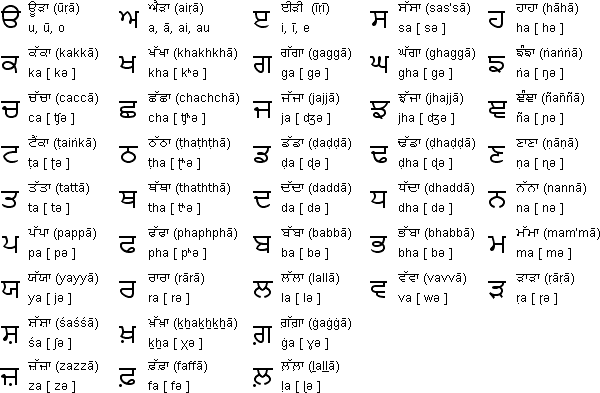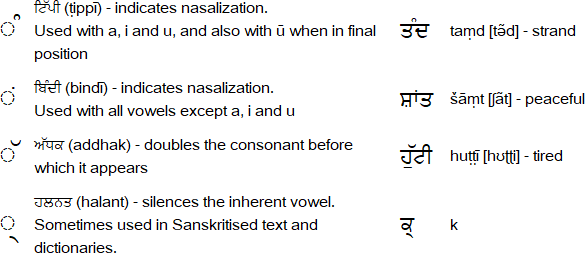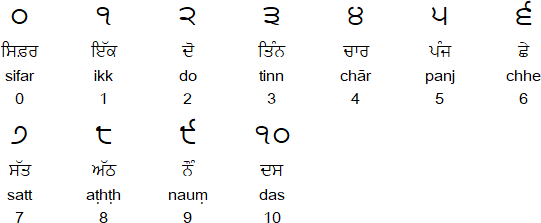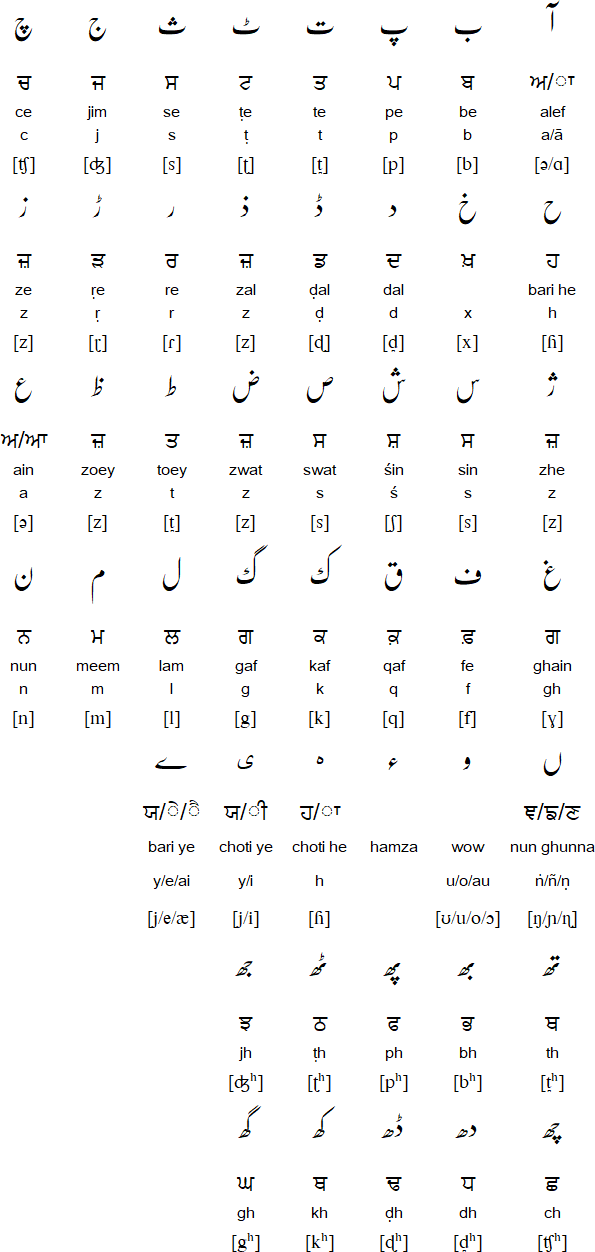Punjabi: Our Language
Gurmukhi script 
Origin
The Gurmukhi alphabet was devised during the 16th century by Guru Nanak, the first Sikh guru, and popularised by Guru Angad, the second Sikh guru. It was modelled on the Landa alphabet. The name Gurmukhi means "from the mouth of the Guru".
Notable Features
- This is a syllabic alphabet in which all consonants have an inherent vowel. Diacritics, which can appear above, below, before or after the consonant they belong to, are used to change the inherent vowel.
- When they appear at the beginning of a syllable, vowels are written as independent letters.
- When certain consonants occur together, special conjunct symbols are used which combine the essential parts of each letter.
- Punjabi is a tonal language with three tones. These are indicated in writing using the voiced aspirates consonants (gh, dh, bh, etc) and the intervocal h.
Used to write:
Panjabi or Punjabi, an Indo-Aryan language spoken by about 60 million people in Pakistan and the Indian state of Panjab. In Pakistan Panjabi is written with a version of the Arabic script known as Shahmukhi (see below).
Gurmukhi script (ਗੁਰਮੁਖੀ)
Vowels and Vowel diacritics (Laga Matra)

Consonants (Vianjans)

Other symbols

Numerals

(شاہ مکھی) Shahmukhi script

Sample text in Punjabi (Gurmukhi alphabet)

Sample text in Punjabi (Shahmukhi alphabet)

Transliteration
Sārē insān āzād tē ḥuqūq tē ‘izzat dē liḥāẓ nāl barābar pædā næn. Oh ‘aqal samajh tē cangē mundē dī pachān tē aḥisās rakhadē ne is dasţē lohnān nūn ikk dūjē nāl bhā´īcārē wālā salūk karna cāhī dā æ.
Translation
All human beings are born free and equal in dignity and rights. They are endowed with reason and conscience and should act towards one another in a spirit of brotherhood.
(Article 1 of the Universal Declaration of Human Rights)
ALl Creadit goes to :https://www.omniglot.com/writing/gurmuki.htm
ntroduction
Punjabi (also known as Panjabi) is a member of the Indo-Aryan branch of the Indo-European language family.  Eastern Punjabi is spoken as a first language primarily in the state of Punjab by 27 million people (Ethnologue). Western Punjabi (also known as Lahnda) is spoken by 60 million people in the Punjab province of
Eastern Punjabi is spoken as a first language primarily in the state of Punjab by 27 million people (Ethnologue). Western Punjabi (also known as Lahnda) is spoken by 60 million people in the Punjab province of  Pakistan (Ethnologue). There are also speakers of these dialects in a number of other countries, including Afghanistan, Bangladesh, United Kingdom, the U.S., and Canada. In Canada, Punjabi is spoken by over 250,000 speakers, making it the country's sixth largest language.
Pakistan (Ethnologue). There are also speakers of these dialects in a number of other countries, including Afghanistan, Bangladesh, United Kingdom, the U.S., and Canada. In Canada, Punjabi is spoken by over 250,000 speakers, making it the country's sixth largest language.
Ancestors of the Punjabis are thought to have inhabited the Indus Valley at least as far back as 2,500 BC. The area suffered numerous invasions by Indo-Aryan, Persian, Greek, Arab, Afghan, and British invaders. Indo-Aryan invasions impacted the language of the ancient Punjabis with the result that, like other Indo-Aryan  languages, Punjabi evolved from Sanskrit through Prakrit, a large group of ancient Indic languages spoken some time between the 6th and the 13th centuries AD.
languages, Punjabi evolved from Sanskrit through Prakrit, a large group of ancient Indic languages spoken some time between the 6th and the 13th centuries AD.
 Eastern Punjabi is one of the 22 official languages and 14 regional languages of India. It is the medium of everyday communication in the Indian state of Punjab and is also used in education, government, business and the media.
Eastern Punjabi is one of the 22 official languages and 14 regional languages of India. It is the medium of everyday communication in the Indian state of Punjab and is also used in education, government, business and the media.
- Western Punjabi has no official status in Pakistan. Punjabi speakers in Pakistan tend to use Urdu and English in government, media, and education, as well as in most writing.
- Punjabi is the religious language of the Sikhs. It is also the language of the popular Bhangra folk dance and singing.
All credit geivn to : https://www.nvtc.gov/lotw/months/february/punjabi.html
